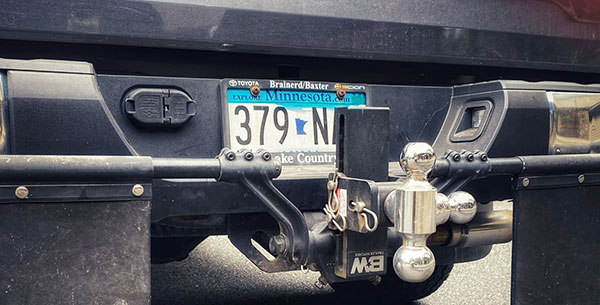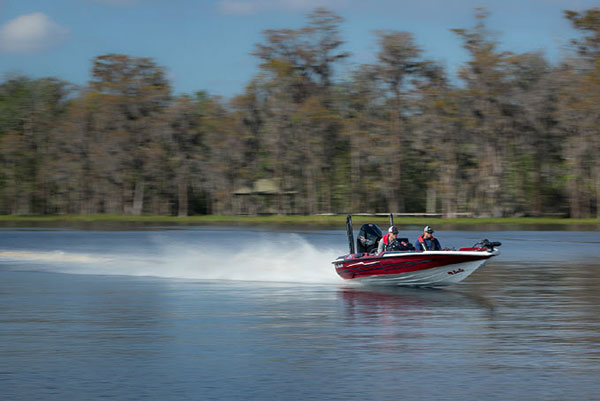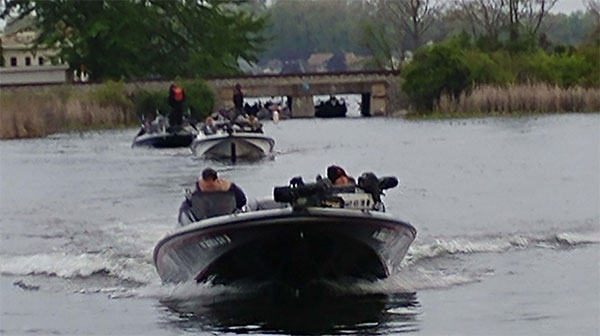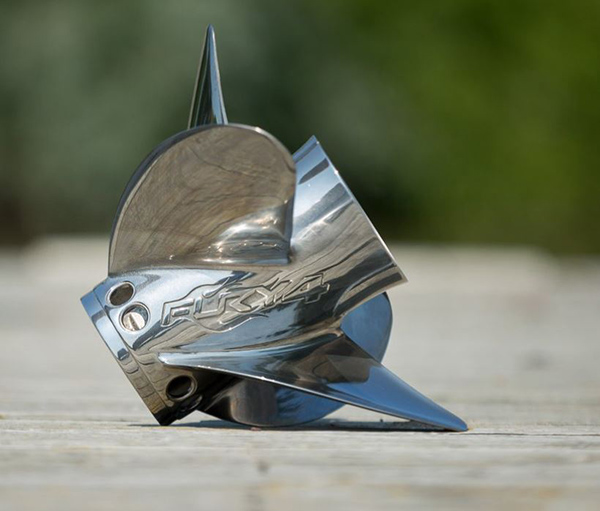- Details
Mercury Report
 Get Hitched Properly When Towing A Boat
Get Hitched Properly When Towing A Boat
Before you get on the water, you must get to the water.
Unless you store your boat at the marina, you’ll need a suitable tow vehicle. Just don’t overlook the hitch. Many people – especially those who have never towed before – assume that a hitch is a hitch and that as long as your vehicle has one, you’re ready to hook up and hit the road. The fact is, hitches can vary widely in terms of weight capacity and application, and all are most certainly not created equal.
To properly and safely tow a boat, you need to ensure that your tow vehicle – be it a truck, SUV or van – is equipped with a suitable receiver-type hitch that is rated to handle both the tongue weight (TW) and gross trailer weight (GTW) of your fully-loaded boat-and-trailer combo. Every hitch is designated with a class rating, from Class I to Class V, and your hitch’s classification, as well as the combined weight of your fully-loaded boat and trailer, are very important things to know.
Hitch Classifications
A Class I hitch is rated for up to 2,000 pounds GTW and 200 pounds TW, so it’s suitable for smaller boats. A Class II hitch has a higher capacity at 3,500 pounds GTW and 300 pounds TW, which is big enough for a small aluminum or inflatable boat. For reference, a trailer loaded with an 18-foot outboard-powered runabout will tip the scale at about 3,000 pounds before you’ve put an ounce of gear or drop of fuel in it. Minivans and smaller SUVs often come equipped with a Class I or Class II hitch.
A Class III hitch is one of the most common hitches, and with its 6,000-pound GTW and 600-pound TW capacity, it’s capable of safely handling the vast majority of trailerable boats on the market. This hitch is best suited for a full-size truck or SUV, and it bolts directly to the frame for a robust and secure connection. The receiver of a Class III hitch typically accepts a 2-inch square insert – also called a drawbar or ball mount – which supports the tow ball and connects the trailer to the hitch.
Class IV and V hitches are also available, but they’re only necessary for very large and heavy boats. Class III, IV and V hitches can also be fitted with weight-distribution systems that can significantly increase the working capacity of the hitch and offer better stability on the road. Weight-distribution systems typically require a special drawbar and adding auxiliary connection points to the trailer. If your boat is heavy enough to require a Class IV or V hitch and/or a weight-distribution system, you’ll likely need a heavy-duty truck to pull it, so be extra mindful of your vehicle’s tow rating.
When buying a hitch, you’ll also need to buy a drawbar and tow ball that carry the same rating as your hitch. If either component is rated for less weight than the hitch, you’ve put a weak link in the chain and therefore reduced your towing capacity to the rating of the lowest-rated component.
A word of caution: The bumper of your tow vehicle might have a hole where a tow ball could be installed. Ignore it. An actual receiver hitch is the only suitable way to tow.
- Details
Mercury Report
 Need A Propeller Change? Your Mercury Dealer May Offer Test Drives
Need A Propeller Change? Your Mercury Dealer May Offer Test Drives
A stainless steel propeller can last many seasons, but for most boat owners the cost is not insignificant, especially for boats with more than one engine.
With this in mind, Mercury Marine has created a Propeller Demo Program for its dealers that allows a boat owner to test drive stainless steel Mercury propellers. The demo program makes it possible to zero in on the best all-around propeller model and pitch size for your boat before you make that purchase.
Mercury dealers participating in the Propeller Demo Program have on hand a selection of popular stainless steel propeller models in a range of pitch sizes dedicated to demo use. Each dealership devises its own demo program policy, but most request a modest deposit, which may often be applied to the purchase of a new prop. If you decide to make a purchase, the dealer will order you a brand-new prop. The demo props go back on the shelf for the next boater to try.
- Details
By BoatUS
 Are You Running the Right Prop on Your Fishing Rig?
Are You Running the Right Prop on Your Fishing Rig?
Any practical boat owner knows to change the engine oil, swap out the impeller every year or two, and change worn belts before they break. But the propeller is much more likely to be overlooked. Choosing the wrong prop or continuing to use a damaged prop can decrease boat performance, increase fuel consumption, and potentially damage your engine and transmission. Here are five conditions that warrant a closer look at your prop.
Tip
With the prop out of the water, tap each blade in turn with block of wood. A different tone may indicate a serious problem.
Is Your Boat Slow To Come Onto Plane?
If your prop has too much pitch (see "A Few Important Definitions" below) like the one above, the engine will have a lousy "hole-shot" — the ability to jump up on plane quickly — and will lug (or drag). It's like starting from a stoplight with your car in third gear — not only will it take much longer to accelerate, the engine has to work hard at low speeds, which places a tremendous load on the pistons, crankshaft, and bearings. This, in turn, can cause detonation, piston seizure, and other engine damage.
- Details
Mercury Report
 Mercury Site Helps You Select the Proper Outboard Propeller
Mercury Site Helps You Select the Proper Outboard Propeller
Boat dealers and service experts will tell you that incorrect prop selection is a leading cause of poor engine and boat performance.
Mercury Marine, the world’s largest supplier of propellers for recreational and commercial boats and engines, provides a wide array of propeller options to ensure there is a propeller for every boat application.
The Mercury Propeller Selector tool on www.MercuryMarine.com helps boaters select the best propeller model and pitch for their boat. The Prop Selector is essentially a digital catalog that aids in selecting the most appropriate propeller.
To find your propeller on www.MercuryMarine.com, click on Propellers, then click on Mercury Prop Selector. Once there, follow the simple steps to select your boat type, boat usage and engine information, and the Selector will provide a recommended prop family. The Selector then helps you determine the correct pitch of your propeller.




